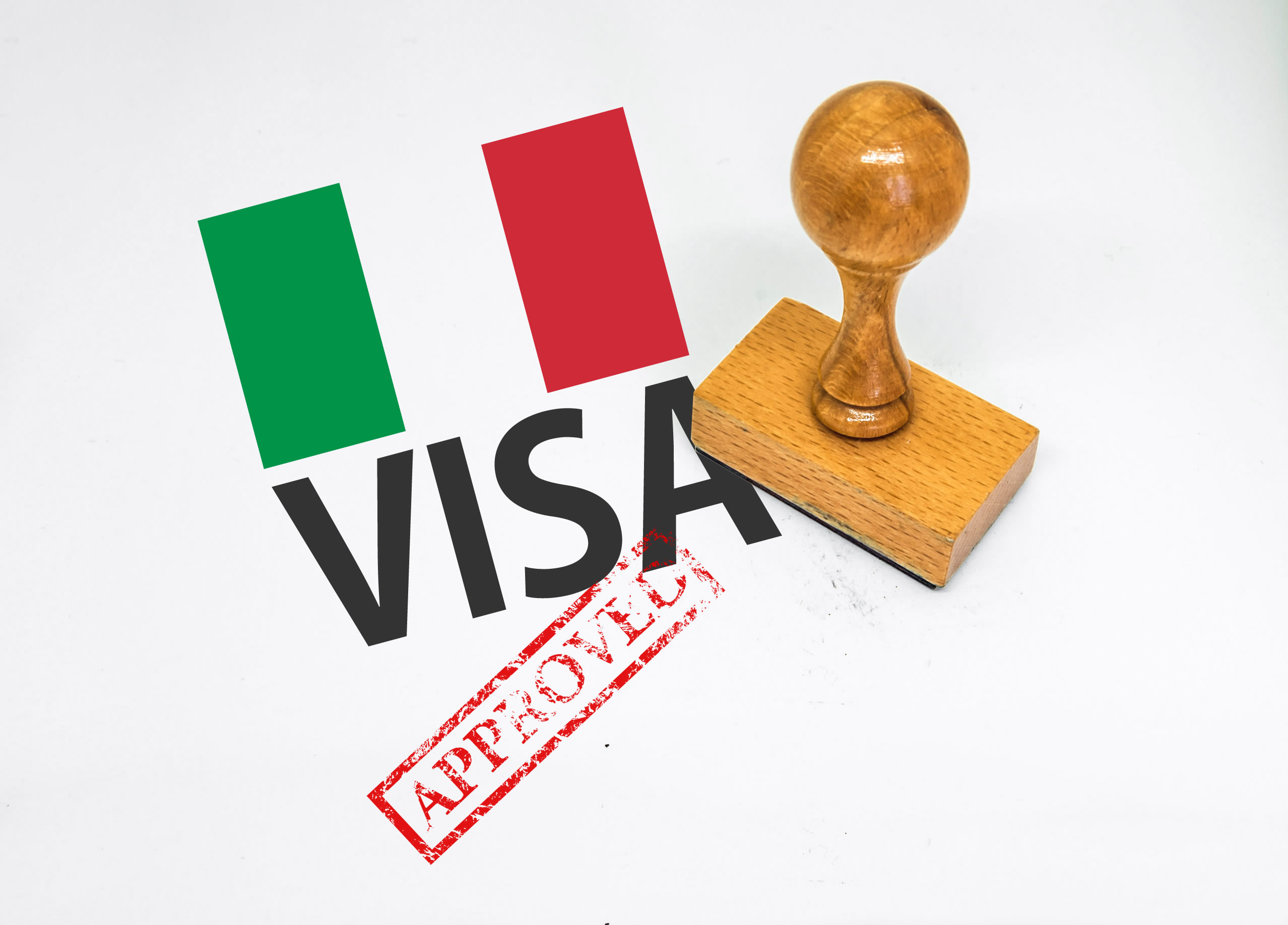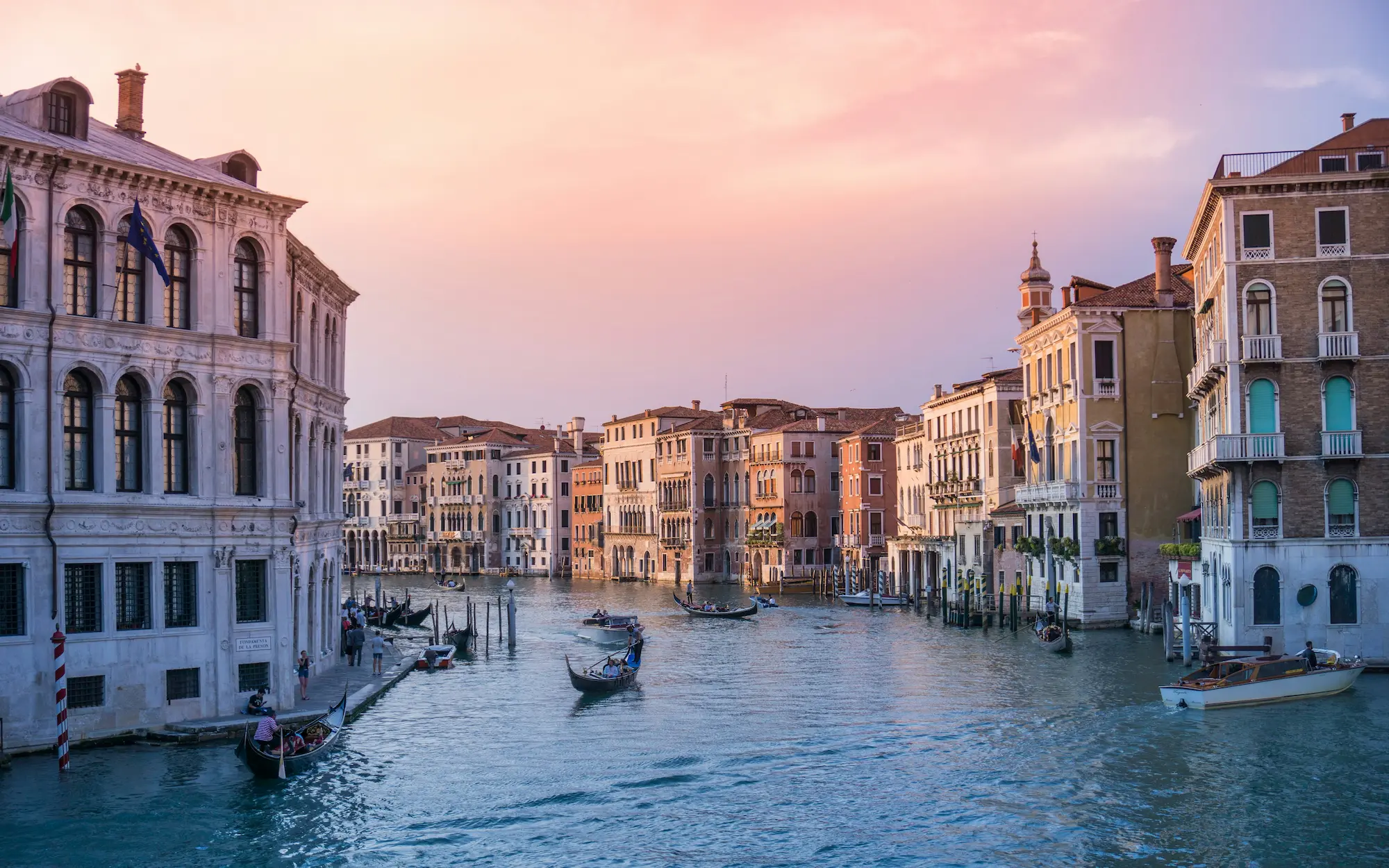Going to Italy and wondering if you need a visa?
It’s one of the first things you have to consider when planning a trip abroad — and the answer is never simple.
If you’re going or a short trip, long trip, or for work, the requirements differ depending on your nationality and the length of your stay.
Here’s what we’ll cover in this post: who requires a visa for Italy, how these upcoming changes to travel authorization will affect you, and where to get the most up-to-date information.
Knowing the rules ahead of time will make your arrival a lot smoother and hassle-free.

Do You Need A Visa to Go to Italy
It all depends on your nationality, how long you are staying, and your reason for traveling.
If you’re from a Schengen Area nation, you can enter Italy without a visa. Schengen citizens or visitors can travel freely for short stays, be it for tourism, business, or family visits.
If you are NOT a citizen of a Schengen country, visa rules are based on your nationality. Most travelers need a Schengen visa to enter Italy and the Schengen Area.

Countries exempt from short-stay visa requirements
Nationals of the following countries, entities and territorial authorities do not need a visa for visits of up to 90 days:
Europe | North America & Caribbean | Asia & Oceania |
Albania | Antigua and Barbuda | Australia |
Andorra | Bahamas | Brunei |
Bosnia and Herzegovina | Barbados | South Korea |
Georgia | Canada | United Arab Emirates |
Kosovo | Costa Rica | Israel |
Moldova | Dominica | Japan |
Monaco | El Salvador | Hong Kong SAR |
Montenegro | Grenada | Malaysia |
North Macedonia | Guatemala | Macao SAR |
Serbia | Honduras | Singapore |
Ukraine | Mexico | Taiwan |
United Kingdom | Nicaragua | East Timor |
South America | Panama | Thailand |
Argentina | Saint Christopher and Nevis | Kiribati |
Brazil | Saint Lucia | Marshall Islands |
Chile | Saint Vincent and the Grenadines | Micronesia |
Colombia | Trinidad and Tobago | Nauru |
Paraguay | United States | New Zealand |
Peru | Solomon Islands | Palau |
Uruguay | Samoa | Seychelles |
Venezuela | Tonga | Tuvalu |
There are a few exceptions for countries/areas with visa-free short-stay access:
In Taiwan: The exemption is only applicable for those with passports that include a national identity card number.
In Albania, Bosnia and Herzegovina, North Macedonia, Moldova, Montenegro, Serbia, and Ukraine: Only travelers with a biometric passport are eligible for the visa waiver.
In Serbia: Travelers who hold passports that were issued by the Serbian Coordination Directorate do not qualify.
In San Marino and the Holy See: Nationals never need a visa in any circumstance.
In the United Kingdom: There’s a 90-day paid-work visa exemption.
Countries that need an airport transit visa for their citizens
The following nationals will require an Airport Transit Visa (ATV) for Italy:
Asia | Africa |
Afghanistan | Democratic Republic of Congo |
Bangladesh | Eritrea |
Iran | Ethiopia |
Iraq | Ghana |
Pakistan | Nigeria |
Sri Lanka | Senegal |
Syria | Somalia |
Tajikistan | |
Uzbekistan |
Nationals of the above countries are exempt from the Airport Transit Visa if they satisfy one of the following conditions:
Hold a valid Schengen (type C), national (type D) visa, or stay permit from a Member State.
Have a valid stay permit from an EU country not applying Regulation (EC) No. 810/2009 (e.g. Cyprus), or from Andorra, Canada, Japan, San Marino, or the U.S., ensuring unconditional return.
Hold a valid visa for an EU country not applying Regulation (EC) No. 810/2009, or for Canada, Japan, or the U.S., and are traveling to/from the issuing country.
Are family members of EU citizens.
Hold diplomatic passports.
Are aircraft crew and nationals of a state party to the Chicago Convention.
Countries whose nationals require a visa to cross borders
If you aren’t from one of those two countries, you will need a visa. The exact documentation and requirements for you to enter will vary by your nationality and why you’re visiting Italy.
Beginning in 2025, travelers without a Schengen visa from visa-exempt countries will need to apply online for travel authorization through the European Travel Information and Authorization System (by submitting ETIAS).
General Conditions for Foreigners’ Entry into Italy
The Conditions for Entry and Stay in Italy specifically say that entry is only for non-Italians meeting all the listed conditions for entry to Italy. These include:
1. Present yourself at a recognised border crossing point
You need to visit an official and authorized port of entry and have your documentation checked by border officers.
2. Possess a valid travel document recognized by Italy and the Schengen Area
Foreign travelers entering Italy must provide an appropriate travel document. This is usually a passport but can be other officially recognized documents depending on the traveler’s origin.
3. Provide documents proving purpose, funds, and stay conditions
Non-Italian citizens who are planning a visit to Italy must have sufficient means of support to cover their stay and their return to their country of nationality or residence.
4. Ensure you’re not in the Schengen Information System (SIS) with an alert or entry ban
The SIS (Schengen Information System) is a giant security database shared across the EU. If you appear in that database, border police in Italy can legally prevent you from entering, even if you hold the appropriate and valid visa to enter the country.
5. Do not endanger public order, national security, or international relations under Italian or Schengen law
Italian border officials can refuse travelers entry if they feel the traveler may pose a risk to the law and order of the country or the wider Schengen Area.
Foreign nationals must fulfill all of these requirements at the same time in order to enter the country. Not fulfilling any one of the criteria would mean that they can be refused entry or visa.
If you’d like to learn more about SIS, you can read more on the official website and regulations: https://eur-lex.europa.eu/legal-content/EN/TXT/?uri=LEGISSUM%3Al14544
Categories for Long-Term and Short-Term Stays in Italy
1. Airport Transit Visa (Type A)
It can be used for travel within the international transit area of airports in the Schengen Area countries. It cannot be used to enter the Schengen Area and is only available to certain nationalities.
2. Uniform Schengen Visa (Type C)
That visa type is for tourism, business visits, family visits, and attending cultural or sporting events.
This permit allows travelers to visit for 90 days within a 180-day period and can be valid for one, two or five years, depending on the applicant’s travel history and profile.
It’s valid for travel in and out of any country in the Schengen Area.
3. Visa with Limited Territorial Validity (VTL or LTV)
A Limited Territorial Validity Visa (LTV) is only valid for the Schengen country that has issued it, or for other Schengen countries enumerated in the visa, if applicable.
It may be granted under extraordinary circumstances, such as for humanitarian reasons or national interest.
4. Long‑Stay or “National” Visa (Type D)
For visits of over 90 days, the visa will be distributed per need.
While technically restricted to the issuing country at first, a valid residency permit means that a visitor can circumvent that rule and stay Schengen-wide for periods of up to 90 days in a 180-day period.
Categories for Long-Term Visa
Work Visa
This visa is issued to those with a legal job offer in the country. It requires an employment contract and an employer to sponsor the visa.
Study Visa
It’s for students who are enrolled in Italian schools, have proof of enrollment, proof of funds, and proof of accommodation.
Family Reunification Visa
For relatives of Italians who are “resident” in the country, documentation may be required that proves the relationship, the Italian family member’s/legal guardian’s permesso di soggiorno, and their availability to accommodate the minor.
Self-Employment Visa
For those who plan to start a small business or become self-employed and have a strong business case as well as professional qualifications and proof that they can support themselves financially.
If you want more information on the different types of long-term visas, you can visit the official website at: https://consmelbourne.esteri.it/en/servizi-consolari-e-visti/servizi-per-il-cittadino-straniero/italian-and-shengen-area-visas/national-visas-from-91-to-365-days-in-italy/
5. Visa for the Jubilee 2025
If visiting Rome, or other pilgrimage destinations in Italy, for the Jubilee 2025, there’s a special “Tourism – Jubilee” visa you can get.
This visa is meant for pilgrims traveling in groups that are organized by a local church or diocese.
Italy Visa Application Process
The following will tell you everything you need to apply for an Italian visa.

Prepare Your Documents
Typically, you will need the following documents:
1. Valid Passport or Equivalent Travel Document
It is required that Italian visa applicants have a passport or other travel document that is accepted by all of the Schengen Member States.
Your passport must be valid for at least three months, beyond your intended departure from the Schengen Area, and must have been issued within the last 10 years. It must also have at least two blank pages.
Equivalent Travel Document
Stateless Person Travel Document – Issued under the 1954 Convention for stateless individuals; visa required unless holding a Schengen residence permit.
Refugee Travel Document – Issued under the 1951 Convention to refugees; visa required unless the holder has a Schengen residence permit or recognized travel document.
Foreigner Travel Document – For those unable to get a national passport; visa rules depend on the person’s nationality.
Seafarer’s Book – Professional document for maritime workers, valid only for work-related Schengen travel under international labor rules.
Air Navigation Document – Includes pilot or crew licenses under the 1944 Chicago Convention; visa-free for professional use based on reciprocity.
UN Laissez‑Passer – For UN staff; grants visa exemption for stays up to 90 days under UN privileges.
NATO Travel Document – For NATO military and civilian personnel; visa-exempt under NATO agreements (not valid for dependents).
EU / EEA Identity Card – National ID from EU/EEA countries; allows visa-free, work-related travel.
ID from Passport-Free Agreement States – From countries like Monaco and San Marino; allows 90-day visa-free tourism.
EU School Trip Group List – Accepted in place of individual passports for students on EU school trips; no visa required.
Special Laissez‑Passer – Used when no recognized passport exists or only valid for Italy; visa depends on nationality.
Border Laissez‑Passer / Card – For border residents; allows limited local cross-border travel without a visa.
All these documents must comply with the Schengen document criteria.
2. A completed and signed Schengen visa application form (VAF).
The application form required for a visa, including details about you, the purpose of your visit, and your intended travel plans.
3. Two passport-style photos in compliance with ICAO specifications.
Photos must be recent, in color with a white background, and ICAO compliant.
4. Proof of travel arrangements, such as itineraries or return tickets.
Documents that prove you have onward travel planned to show you will be leaving the country at the end of your stay.
5. Proof of accommodation in Italy.
Reservations, host invitation letter, or any other proof detailing where you are going to stay during your visit.
6. Travel medical insurance covering at least €30,000 valid across the Schengen Zone.
Insurance should cover medical emergencies, hospital visits, and repatriation for the entire time you’re in the area and be valid in all Schengen states.
7. Proof of sufficient funds to cover the stay.
You will need bank statements, a few pay stubs, letters of sponsorship, or any official document that demonstrates you will be able to cover your expenses while in Italy.
8. Biometrics
All first-time an applicant 12 or older must personally attend a visa application center or a consulate to have their biometric data collected.
9. Visa Information System (VIS)
The VIS (Visa Information System) is a centralized European database used by Schengen member countries. As an applicant, when you apply for a visa for the first time, your biometric data (fingerprints + photo) are taken and uploaded into the VIS.
Other requirements might apply to your specific situation, depending on your citizenship, the reason you are traveling, and your status as a resident, so check the official website: https://schengeninsuranceinfo.com/schengen-area/entry-requirements/#what-are-the-differences-between-etias-and-the-schengen-visa
Enter the Italy visa interview
The interview takes just 10-15 minutes and will cover why you’re there, how you will support yourself, where you will be staying, perhaps even with some personal questions about your life. As long as you answer everything honestly and directly, you’ll be fine.
Your visa application must be submitted to the consulate no less than 15 days prior to your trip and no more than 6 months before you plan to leave.
Processing Time
Short‑stay visas: usually approved within 15 days (maximum of 45 days in extreme situations).
Long-stay (Type D) visas: it usually takes around 30 days (work/family), and up to 120 days for self-employment or other visas.
You can enter in your details on the website and it will tell you exactly what you need for your application and which embassy/location you’ll need to apply through: https://vistoperitalia.esteri.it/?lang=en_US
Tips for Traveling to Italy
1. Use Regional Trains for Budget-Friendly Travel
If you’re looking to travel faster, high-speed trains skirt across the country. They aren’t cheap though.
For shorter distances, head for the regional trains (Regionali) instead. They are only a fraction of the price and usually.
2. Expect Afternoon Closures in Small Towns
In many villages and small towns across Italy (especially in the south), stores and restaurants close in the afternoon (usually between 1-4 p.m.) for riposo, the Italian siesta.
Make sure to schedule your meals and shopping around this time.
3. Carry Small Cash for Daily Expenses
Though credit cards are commonly used in large cities, in small towns, shops, cafés, open-air markets, and sometimes even taxis will only take cash — particularly in the countryside.
ATMs are easy to find, but never exchange money at a currency kiosk in a touristed area as you’ll get ripped off.

4. Dress Modestly at Churches and Religious Sites
When you visit cathedrals or basilicas, you’ll need to dress appropriately and cover both your shoulders and your knees.
Carry a lightweight scarf or shawl with you, particularly during the summer, so that you don’t get refused entry.
5. Mind Local Customs and Quiet Hours
In residential areas, particularly in older towns noise disturbances are not welcomed in the nighttime and early afternoon.
Italy is all about people and enjoying good company while also respecting privacy—so be friendly and polite but don’t overstep your boundaries.
FAQ
1. Can I renew my Schengen visa in Italy?
Extensions are really only given for emergencies (like serious medical issues). You do it through the local immigration office (Questura).
2. Can I use my driver’s license in Italy?
While not the case for all 26 European countries, citizens of non-EU countries (including the United States and the UK) need an International Driving Permit (IDP).
3. Any important local policies travelers should be aware of?
Yes. No smoking indoors in public areas. No eating or sitting in/on historic monuments (e.g. fountains) or you’ll be fined.
4.Can I pay by credit card everywhere?
Cards are accepted almost everywhere, but you need to have cash.
Conclusion
Whether you need a visa to enter Italy depends on your passport, the purpose of your visit, and how long you plan to stay. And, while most travelers can visit for short periods visa-free, longer stays or specific activities do take some planning and the right visa.
By getting an overview of entry requirements and types of visas, you can make sure your Italian journey starts off on the right foot and legally.
Make sure to confirm the latest requirements with your country’s official source and/or the nearest Italian consulate before you go.
